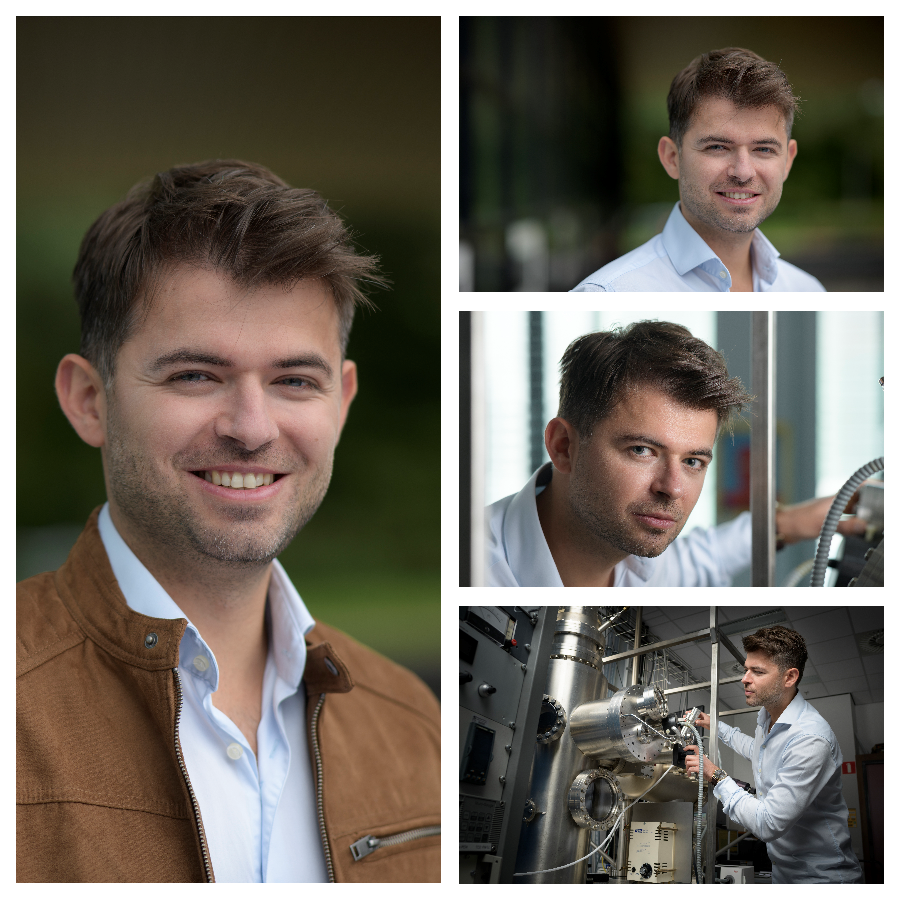Germanene makes devices faster and compacter
A new nanomaterial might change society: germanene. Assistant professor, Pantelis Bampoulis, trying to improve this dream material for the next generation of devices. "Big advantage of germanene is transporting electrons without energy loss. It means we will soon be able to make devices with smaller batteries and more transistors."
Silicon has become an indispensable material for devices in the last decades. It turned out to be the ideal material for transistors, thus for a lot of applications you can find it in a lot of everyday applications: in computer chips, lasers, X-ray machine components, photocells for solar panels, and much more. But silicon has its limits for the semiconductor industry. When we want to develop smaller and faster devices, we need a material with better properties. Researchers all over the world are working on two-dimensional (2D) materials which can replace silicon. 2D means that it consists of just one layer of atoms and therefore lacks a significant third dimension. Graphene was thought to be the successor of silicon, but it’s not easy to manipulate the conductivity properties in graphene. This is crucial for a switching device like the transistor. Furthermore, graphene doesn’t fit the current infrastructure of the semiconductor industry. Silicene could be a good alternative for graphene, but this material has one big disadvantage: it cannot be used at room temperature.
In the worldwide search for ‘the new gold’ Bampoulis might play a key role. He is working on the improvement of the new dream material germanene. Making germanene was an unintended outcome of his PhD research in 2014. “We were one of the first in the world to find the recipe for germanene”, Bampoulis says. “It happened by accident. It was luck. We were trying to make a nanowire of atoms and got germanene at the same time. At first, we didn’t know it was germanene. It took a year to realize that. Now we want to optimize it and to make it useful and relevant for potential applications. We want to change its properties by changing its structure. One of our goals is to make prototypes and therefore we need to make bigger layers of this material. It will be a time-consuming process of trial and error. Eventually, we’re going to study the quantum effects in germanene. You can consider it a playground for new physics.”
An eye for application
“A big advantage of this new material is that you can transport electrons without losing energy. It means you need a smaller battery and can fit more transistors in faster devices. But we are still far away from that. First, we need to study the properties and structure of germanene. This is fundamental research driven by curiosity. I would like to understand how things work on the atomic scale. Quantum mechanics is not easy to grasp for people, but it defines how everything works. It is a start for innovation and can have a potential application in the future, maybe in twenty years or maybe in hundred years from now. That’s why I - as a fundamental researcher - always have an eye for an application. I always wonder: how can it be used? A workable application would be an amazing bonus of my work. We are moving to a quantum world with quantum computers. By understanding how things work at an atomic scale, we can develop new materials with new properties which we don’t know yet. It can provide society with cleaner and more efficient technology in the future.”
Education
Teaching and helping students are the best way to have a direct impact on society is Bampoulis’ belief. He teaches a practical course about measuring and amplifying electronic signals and is also involved with the course ‘Modern Topics in Condensed Matter Physics’.
Supervising bachelor and master students gives Bampoulis great pleasure. “They learn from me, but I also learn from them. We need new minds to move our society forward. In research, our impact is often indirect because it takes longer to be implemented. Through students, you see the impact more quickly.”
About Pantelis Bampoulis
Pantelis Bampoulis (1987) is Assistant Professor in the Physics of Interfaces and Nanomaterials Group of prof. dr. Harold Zandvliet. Bampoulis came to The Netherlands in 2011 after his bachelor Physics in his homeland Greece (the University of Patras). He completed the master Nanotechnology in Twente and obtained his PhD on the thesis about crystalizing water into ice at room temperature by squeezing it with graphene. Bampoulis worked as a postdoc at the Leibnitz University Hannover (Germany) and the University of Cologne (after being awarded the Humboldt Postdoctoral Research Grant). In 2020 he won an NWO Veni Grant of 250.000 euros for his research on germanene.
Press Photos

These press photos can be used with no copyright restrictions.

